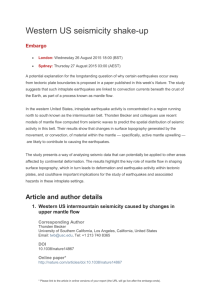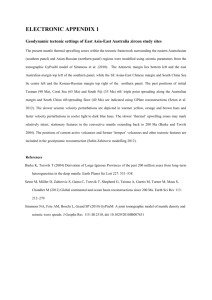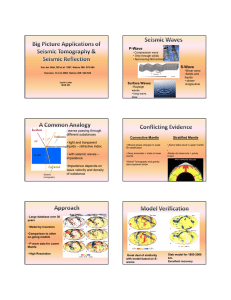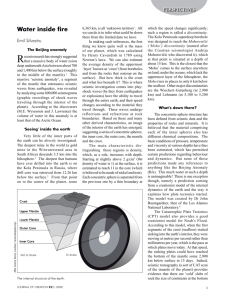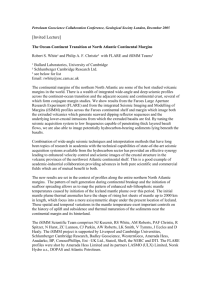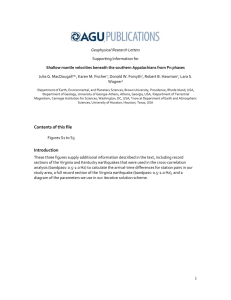"Upper mantle structure through waveform inversion" Seismic P and
advertisement
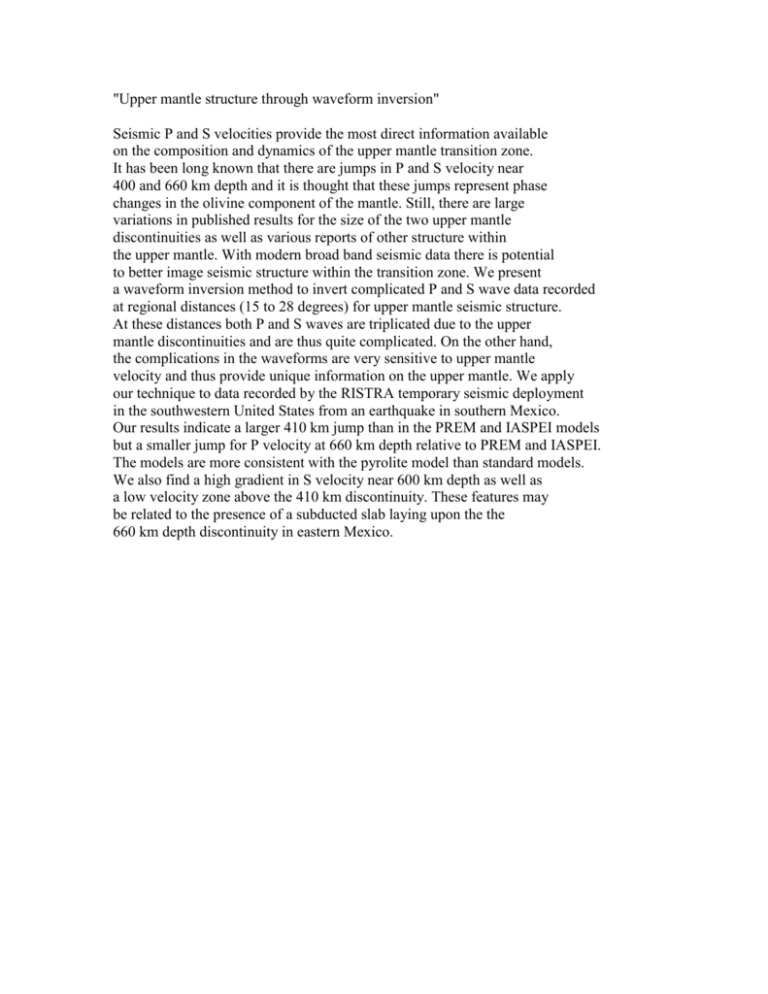
"Upper mantle structure through waveform inversion" Seismic P and S velocities provide the most direct information available on the composition and dynamics of the upper mantle transition zone. It has been long known that there are jumps in P and S velocity near 400 and 660 km depth and it is thought that these jumps represent phase changes in the olivine component of the mantle. Still, there are large variations in published results for the size of the two upper mantle discontinuities as well as various reports of other structure within the upper mantle. With modern broad band seismic data there is potential to better image seismic structure within the transition zone. We present a waveform inversion method to invert complicated P and S wave data recorded at regional distances (15 to 28 degrees) for upper mantle seismic structure. At these distances both P and S waves are triplicated due to the upper mantle discontinuities and are thus quite complicated. On the other hand, the complications in the waveforms are very sensitive to upper mantle velocity and thus provide unique information on the upper mantle. We apply our technique to data recorded by the RISTRA temporary seismic deployment in the southwestern United States from an earthquake in southern Mexico. Our results indicate a larger 410 km jump than in the PREM and IASPEI models but a smaller jump for P velocity at 660 km depth relative to PREM and IASPEI. The models are more consistent with the pyrolite model than standard models. We also find a high gradient in S velocity near 600 km depth as well as a low velocity zone above the 410 km discontinuity. These features may be related to the presence of a subducted slab laying upon the the 660 km depth discontinuity in eastern Mexico.


